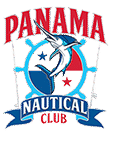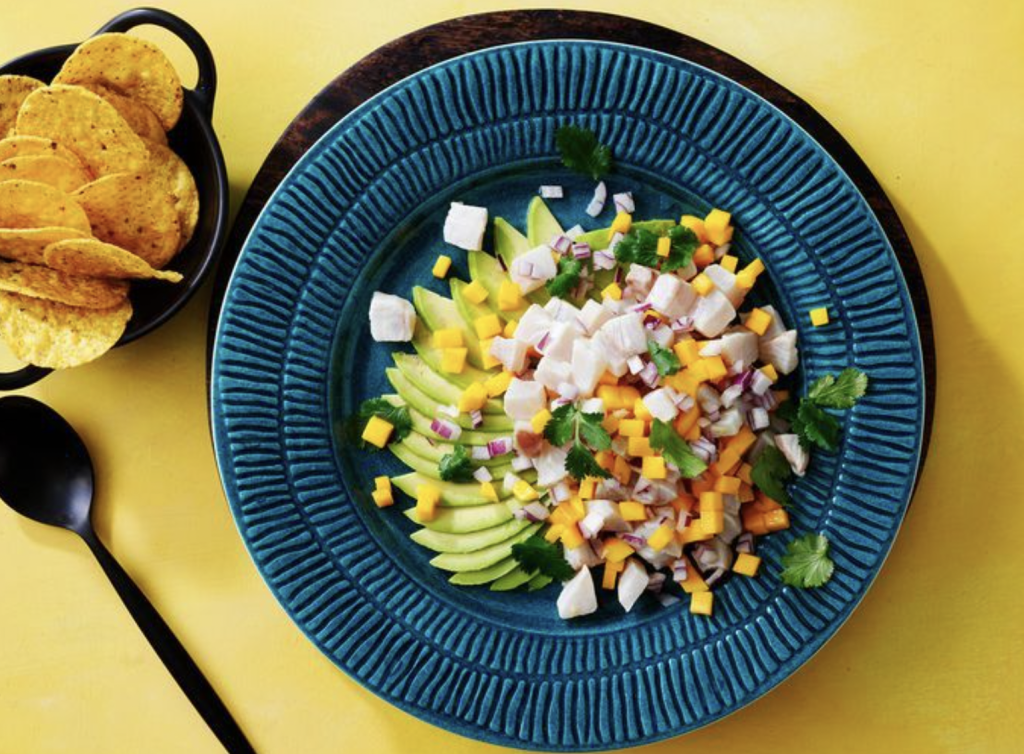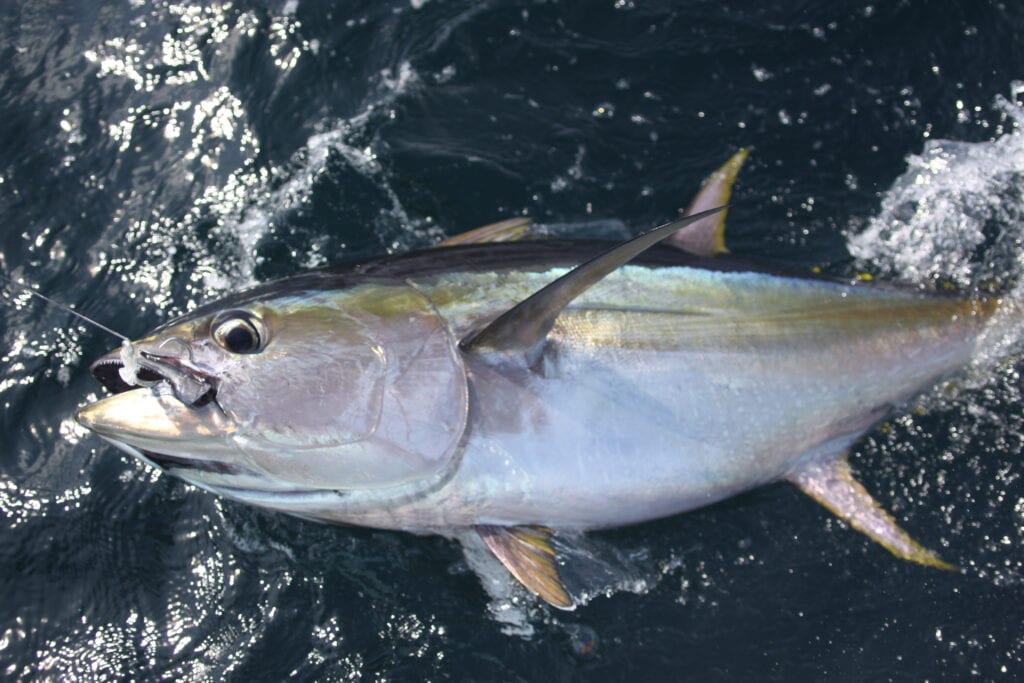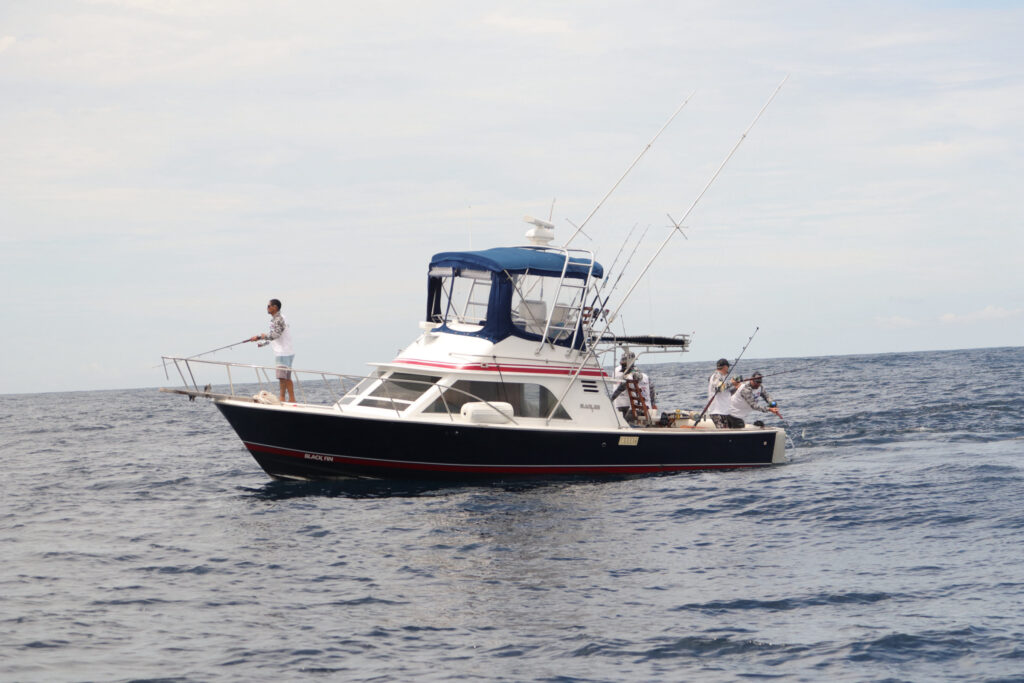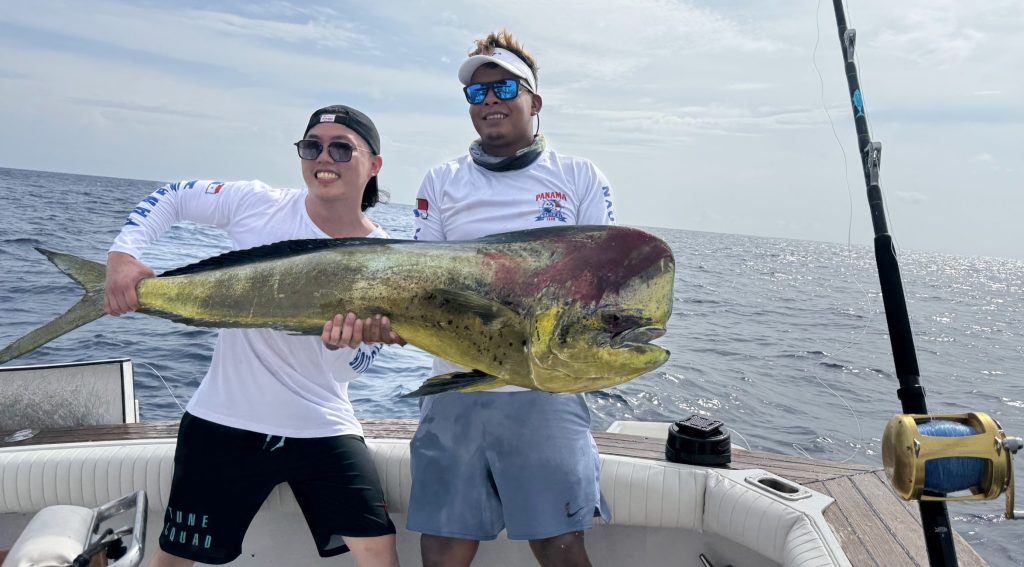Offshore or deep sea fishing is the type of fishing that takes place in the deep sea, usually 20-30 miles from shore. This means the journey to most offshore fishing spots can take anywhere between 1-2 hours. Given the distance and increased unpredictability of weather conditions in the deep ocean, it also requires more equipment and technology vs other types of fishing, like inshore or lake fishing. In offshore waters, you will typically be targeting big game species such as black or blue marlin, sailfish, wahoo, tuna, or mahi mahi.
What type of Fish can you find offshore?
Offshore fish species can be broken down into 2 types: reef fish and open water predators or pelagic.
Reef fish are those that frequent near the ocean floor or around deep structures, these include species such as grouper, red snapper, and amberjack. Pelagic fish are migratory, and follow the baitfish so don’t always hang out in the same spots. Examples of open water predators include tuna, sailfish, marlin, wahoo and mahi mahi. When targeting pelagic species, it is important to understand when the best season is best to fish.
Offshore Fishing Techniques
There are three main offshore fishing techniques: trolling, bottom fishing and drift fishing. Understanding these fishing techniques and the behavior of the target species can increase your chances of a successful day in offshore waters.
- Trolling involves pulling one or several baited lines behind the boat, mimicking the behavior of baitfish. The types of fish you can catch while trolling are usually big game fish and fast swimmers, such as marlin, tuna, mahi mahi, wahoo and more.
- Bottom fishing refers to fishing close to the ocean floor. It involves using lines that are weighted with live or cut bait or jigs that are usually dropped down to deep structures, reefs or shipwrecks. This technique is used to catch reef fish.
- Drift fishing involves setting lines out and allowing the current and wind to drift the boat across the water, dragging the bait behind it. Depending on the species targeted, the lines can either be weighted and sunk to the bottom, or suspended using floats close to the surface. This technique is popular in the Atlantic when targeting large species like kingfish or tuna.
Best offshore fishing destinations in the world
- Panama: the fishing landscape includes many offshore seamounts teeming with life such as Hannibal Bank, where schools of tuna and marlin gather. Inshore fishing in Panama also offers great opportunities to land a large rooster fish, cubera snapper or bluefin trevally. Panama offers year-round fishing, but the peak across most species is between December and May. Check out our fishing calendar to find out when is the best time to visit based on your target species.
- Florida Keys: A chain of limestone islands which offers some of the best offshore fishing in the world. Here you can catch kingfish, wahoo, mahi mahi, tuna, snapper, grouper, sailfish, blue and white marlins. The best time to fish Florida Keys is between August and May.
- Cabo San Lucas: Cabo is nicknamed the “Marlin Capital of the World” for a reason. They have a strict catch-and-release law in place, which helps keep the species population intact. You can also find dorado, yellowfin tuna as well as marlin. Cabo offers year-round fishing, with the best fishing between May and December.
- Madeira: this Portuguese island in the North Atlantic offers exceptional fishing for blue and white marlin, tuna and mackerel. The best season to fish in Madeira is from May to September.
Planning an offshore fishing trip in Panama
If you are looking for a sportfishing charter to explore the offshore waters of Panama, we have you sorted. Check out our all-inclusive fishing packages, email us at panamanauticalclub@gmail.com or call +1 800 507 1246 for more info on availabilities for your next fishing adventure.
